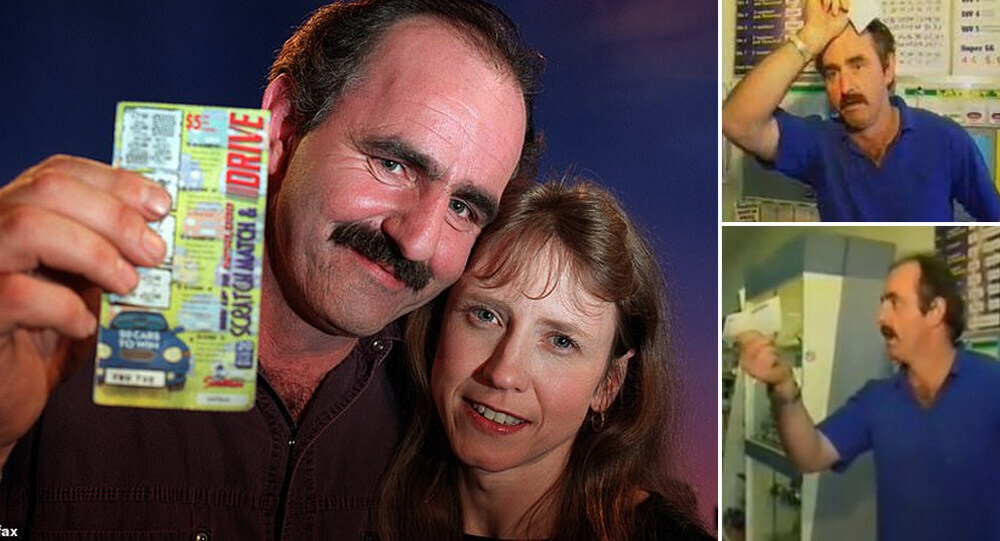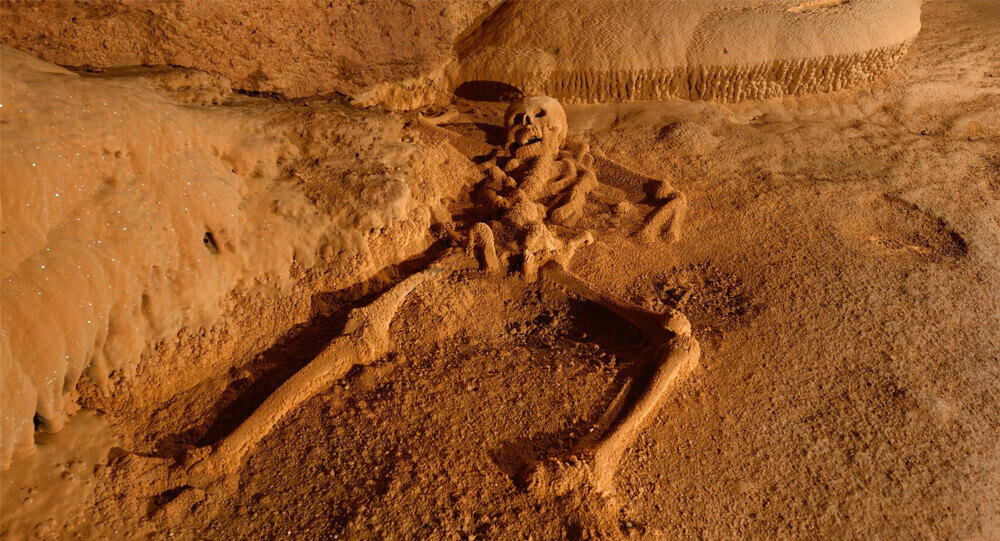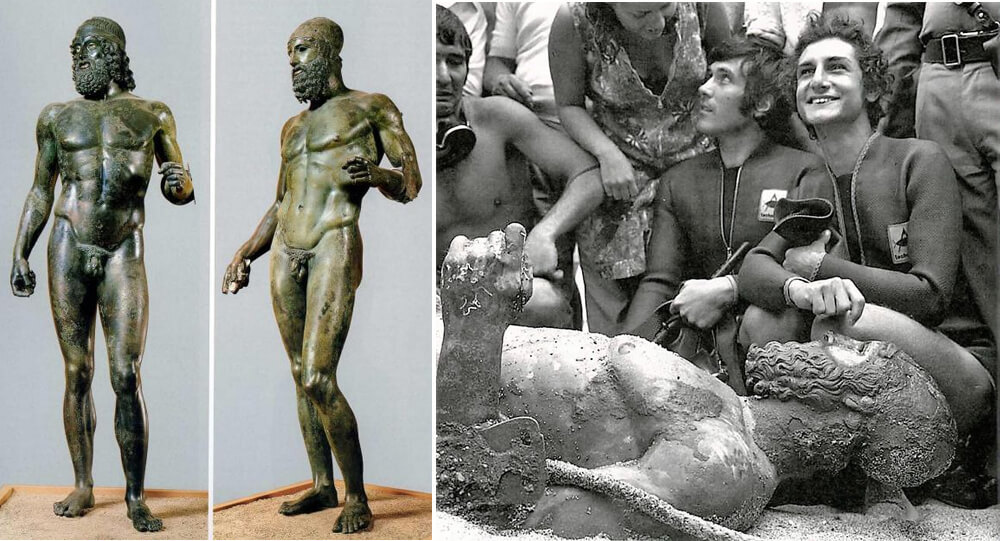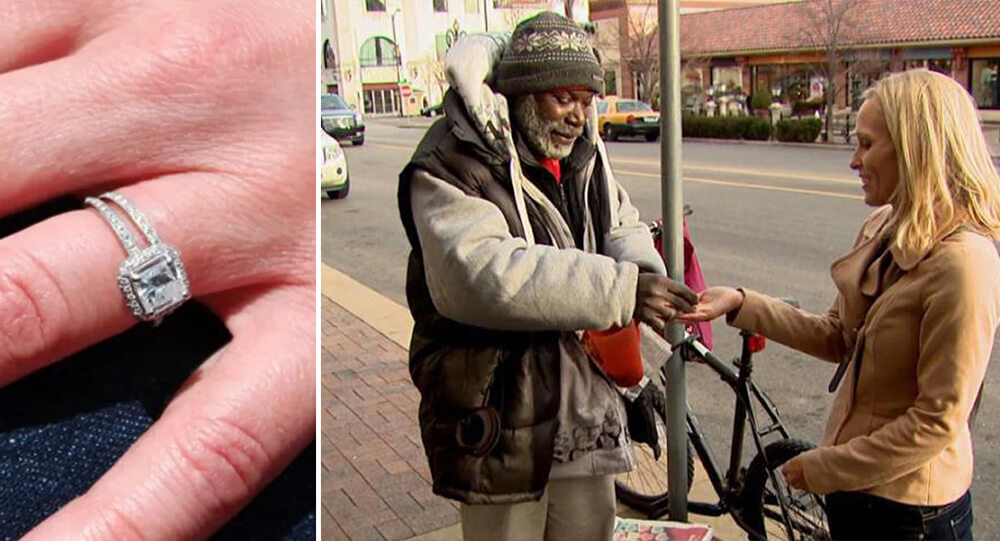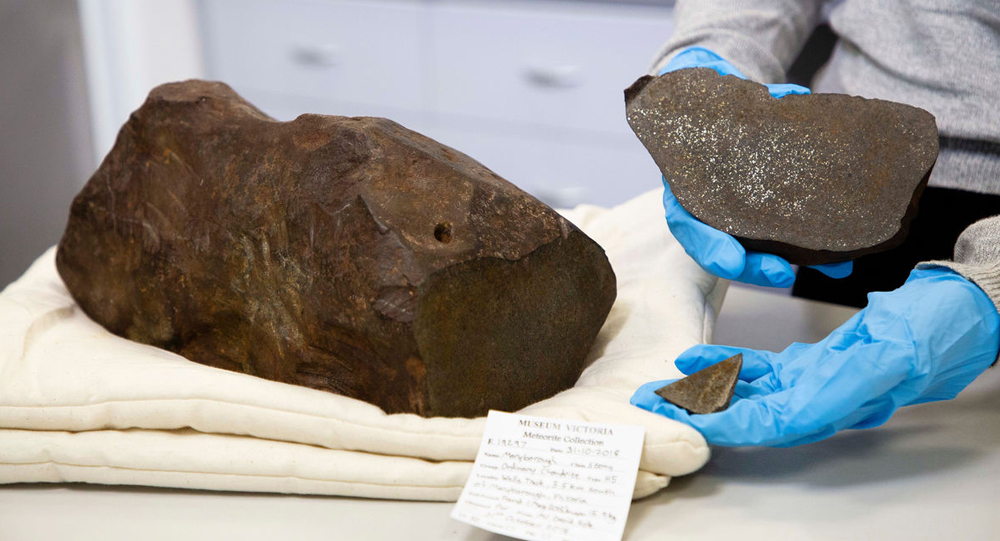

The Man Who Kept a “Gold” Rock for Years—Only to Discover It Was a 4.6-Billion-Year-Old Meteorite Worth a Fortune
Imagine holding what you think is a hefty chunk of gold in your hands—a treasure you cherish and guard for years. That’s exactly what happened to one man, who clung to a solid, metallic rock weighing 17 kilograms, convinced of its golden value. Little did he know, this unassuming rock would reveal itself as something far more extraordinary: a meteorite forged billions of years ago, carrying secrets from the birth of our solar system.
Holding a “Gold” Treasure: Years of Misplaced Value
For years, the man admired this dense, shiny rock, believing it to be a rare and valuable chunk of gold. Its weight, metallic sheen, and hefty feel were convincing enough, especially to a non-expert. This rock wasn’t just any stone—it had physical qualities that suggested something precious.
Throughout this time, he stored the rock safely, occasionally showing it to friends and family, proud of his “golden” find. Yet, despite the perceived value, he never fully tested its authenticity—an oversight that many treasure hunters and hobbyists sometimes fall into.
The Surprising Revelation: A Meteorite From Outer Space
Curiosity finally won, and the rock was sent to experts for appraisal. What arrived at the laboratory was no common mineral deposit. After careful analysis using spectroscopy and metallurgical testing, scientists confirmed the object wasn’t gold but a meteorite composed mainly of iron and nickel.
More astonishingly, this meteorite was dated to about 4.6 billion years old. That means it formed in the early solar system period when planets—including Earth—were born out of cosmic dust and gas. This rock literally predates our planet’s surface rocks and carries the history of the solar system’s chaotic infancy.
Why Are Meteorites So Valuable?
Meteorites, especially iron-nickel types like this one, are prized for several reasons:
- Rarity: While many meteorites fall to Earth, only a small percentage are large, intact, and suitable for collection or scientific study. This 17-kilogram specimen is a significant find.
- Age and Origin: Being 4.6 billion years old gives meteorites a unique scientific value. They help researchers understand the chemical and physical processes during planetary formation.
- Metal Composition: Iron-nickel meteorites have distinctive crystalline patterns, known as Widmanstätten patterns, rare centuries-old materials that can’t be replicated on Earth’s surface.
- Cultural and Historical Significance: Meteorites have fascinated humans for millennia, often regarded as sacred or mystical objects in many cultures.
Pricing for such meteorites can vastly exceed the value of gold by weight — collectors and institutions may pay from tens of thousands up to millions of dollars for extraordinary specimens, depending on rarity, size, and scientific interest.
The Science Behind Meteorite Identification
Scientists use several tools to identify meteorites. A magnetic attraction test helps since iron meteorites strongly attract magnets. Spectrometry analyzes elemental composition to distinguish terrestrial metals from extraterrestrial ones.
Microscopic examination reveals unique crystal structures not found in Earth rocks. Radioisotope dating then estimates the literal age, giving clues about where and when the meteorite formed in space.
This process ensures that each suspected meteorite is authentic and adds to the scientific understanding of our cosmic neighborhood.
Fascinating Trivia About Meteorites
- The largest meteorite ever found, the Hoba meteorite in Namibia, weighs around 60 tons and lies where it landed—it’s so heavy it has never been moved.
- Some meteorites contain organic compounds, providing key insights into the possible origins of life on Earth.
- Falling meteorites have contributed metals like iron to Earth’s crust, meaning parts of our planet literally come from space.
- Meteorites are often older than Earth itself—some predate the rocky planets, capturing an ancient snapshot of solar system formation.
- Famous museums around the world proudly display meteorites that visitors can touch and learn about our cosmic history.
What Happened to the Rock’s Owner?
Once informed of the rock’s true nature, the man’s prized possession transformed from “just a heavy rock” or “gold lump” into a priceless link to the stars. The meteorite’s value skyrocketed, and he was advised to possibly sell or donate it to science or museums.
Stories like his remind us that sometimes, treasures in our backyards can be far more spectacular than we imagine—sometimes even falling from the skies.
Final Thoughts: When Gold Isn’t the Only Treasure
The story of this 17-kilogram “gold” rock shows that sometimes, real treasure lies in unexpected places. While gold has fascinated humanity for ages, a meteorite carrying billions of years of cosmic history tells an even grander story.
Meteorites connect us to our origins and remind us of the vast universe beyond our world. So, the next time you stumble on a “rocky treasure,” remember—it might just be a piece of the heavens.
If you enjoyed this cosmic tale of mistaken identity and ancient space rocks, share it with fellow space fans, and stay tuned for more fascinating stories about our universe’s hidden wonders!

Beyoncé and Jay-Z's Hospital Security Blocked NICU Access for Father of Premature Twins
A father was denied access to see his premature twins in the NICU when Beyonce and Jay-Z had their daughter at the same time.

A man who was saved from committing suicide 16 years ago now assists people dealing with mental health issues
Kevin Berthia traveled to the Golden Gate Bridge in 2005 to commit suicide. He ended up spending 92 minutes on the edge of the bridge talking to officer Kevin Briggs about his life. In much better circumstances, they cross paths at the same bridge ten years later.

Smart guy brings life-sized cutout of his late mother to his graduation
Even though that his mother passed away in 2016, a young man had a clever idea to make a life-size cutout of her and bring it to the event so that she could attend his graduation ceremony.

Australian man dies, comes back to life, and wins the lottery twice
Bill Morgan, an Australian, is a man who has beat the odds. He escaped death by surviving a horrific automobile accident and heart attack before collapsing into a coma and going on to win the lotto twice. He went from losing virtually everything to winning far more than he could have imagined.

The Crystal Maiden of the Actun Tunichil Muknal Cave
Located in Belize, there is a cave where the remnants of ancient Maya human sacrifices can be witnessed. However, reaching the back of the cave system requires swimming, wading through a cave river, and crawling through narrow, uneven rocky passages in darkness. Once there, visitors can walk among the numerous corpses of sacrifice victims, including The Crystal Maiden, an 18-year-old whose skeleton has become calcified to the point of sparkling.

The accidentally discovery of Riace bronzes
Stefano Mariottini was snorkeling off the coast of Monasterace near Riace in 1972 when he noticed a human hand sticking out of the sand and called the police, thinking it was a corpse. It was actually two statues of "Warriors from Riace" - 5th century BC Greek bronze statues.

JBJ Soul Kitchen: Bon Jovi's community restaurant
JBJ Soul Kitchen is a community restaurant by Jon Bon Jovi with no prices on the menu; customers donate to pay for their meals. If you are unable to donate you may do volunteer work in exchange for your family’s meal.

This whale tail sculpture saved a train that went off the rails
A train in the Netherlands failed to stop in time and broke through the emergency barrier. It's being held up by the statue of a whale's tail.

The Man Who Survived Falling Through a Thunderstorm, William Rankin
William Rankin was a fighter pilot who survived an ejection into a thunderstorm. He suffered frostbite, violent wind and lightning, severe decompression, and nearly drowned from breathing in rain water. He was in the cloud for over 40 minutes in total.

Smart girl saves her family more than 100 people in 2004 tsunami
In 2004, a 10-year-old girl saved her family and 100 other tourists from the Asian tsunami because she had learned about the giant waves in a geography lesson, it has emerged.

How hero parrot saved little girl who was choking on her breakfast
In 2008 Quaker parrot Willie alerted his owner Megan Howard when the little girl she was babysitting began to choke. Howard was in the bathroom when the parrot repeatedly yelled "Mama! Baby!" flapping his wings. Megan rushed and performed the Heimlich maneuver, saving her life. Willie received the Red Cross Animal Lifesaver Award.

A subway in Chongqing passes through a building (images)
A train has been constructed through an apartment complex in Chongqing, China. The 19-story residential structure is not only passed by the light rail passenger train, but it also serves as a transit stop. Apartment residents can simply get a ride from the sixth to eighth levels.

Man Trapped in the Sahara Desert Constructs a Bike From His Broken-Down Car to Save His Life
A man who became lost in the desert disassembled his broken-down car and turned it into a functional motorcycle, which he used to escape.

Neerja Bhanot, the braveheart flight attendant was never run away from a crisis
Neeja Bhanot, a 22 year old Indian flight attendant who helped hides 41 American passports aboard a hijacked plane. She died shielding three children from gunfire and was posthumously awarded bravery medals from India, Pakistan, and the United States.

Max Headroom Incident: America’s Creepiest TV Hack
In 1987 a man hijacked a television station during an episode of Dr. Who and wore a Max Headroom mask and uttered nonsense, and he still hasn’t been caught

Estonians save a wolf from the ice by mistaking it for a dog
Two young construction workers in Estonia discovered what they thought was a dog caught in a frozen lake. They carried it to their car and brought him to an animal shelter, not realizing it was a wolf.

chand baori stepwell in Rajasthan India, Ancient cooling technique
This Chand Baori stepwell in Rajasthan, India is over 1200 years old. It’s called Chand Baori. The air at the bottom of the well is 5-6 degrees cooler than at the surface, so in addition to being a water source, it was used as a community gathering place where locals could escape the heat.

How 'Brad's Drink' Became Pepsi-Cola
Pepsi was first introduced as “Brad’s Drink” in New Bern, North Carolina, United States, in 1893 by Caleb Bradham, who made it at his drugstore where the drink was sold. It was renamed Pepsi Cola in 1898, named after the digestive enzyme pepsin and kola nuts used in the recipe.

The Terrifying Mount St. Helens Eruption is Captured by the Robert Landsburg Photographs
Robert Landsburg, a photographer who upon realisation that he is going to die in the mount St. Helens eruption of 1980 lay down on top if his equipment to preserve the photographs he had taken of the events. Landsburg‘s body was found 17 days later, buried in ash with his film intact.

A man joins a search operation without realizing he is the missing person
Beyhan Mutlu, a Turkish national, was reported missing by local media and unintentionally joined search teams looking for himself in a forest. He was drunk and lost in the woods when he ended up in a group with others looking for himself.

Aitzaz Hasan, Pakistani school boy who sacrificed his life from suicide bomber
Aitzaz Hasan, a 15 year old Pakistani school boy, sacrificed his life while preventing a suicide bomber from entering his school of 2000 students. His father said "My son made his mother cry but saved hundreds of mothers from crying for their children."

Baby Lynlee 'born twice' after life-saving tumour surgery
Baby Lynlee was "born twice." First, surgeons brought her out of the womb to remove a spinal tumor. After the successful surgery, she was placed back and born again as a healthy baby girl.

The Inspiring Journey of Francis Tsai, Marvel Comics artist diagnosed with ALS
Francis Tsai, an American illustrator and conceptual artist who worked for Marvel Comics, was diagnosed with ALS in 2010. After he lost the ability to move his hands and arms, he started painting digitally on his cellphone with his right big toe. After he could not move his feet anymore, he began using eye-gaze technology to keep drawing.

The rescuing hug - the touching story of twins Brielle and Kyrie Jackson
Brielle and Kyrie Jackson’s lifesaving hug was captured when Brielle was struggling to breathe and going blue. As a final option, the nurse deviated from protocol and placed them in the same incubator. Kyrie wrapped her arm around her sister, who immediately began to stabilize

Billy Ray Harris: A Story of Kindness and Honesty
In 2013, a homeless man named Billy Ray Harris discovered a $4,000 engagement ring in this cup. A woman had dropped while giving him some change. He returned the ring to her two days later. To thank him for his honesty, she set up a fund with the goal of raising $4,000 for him. It earned more than $185,000.




